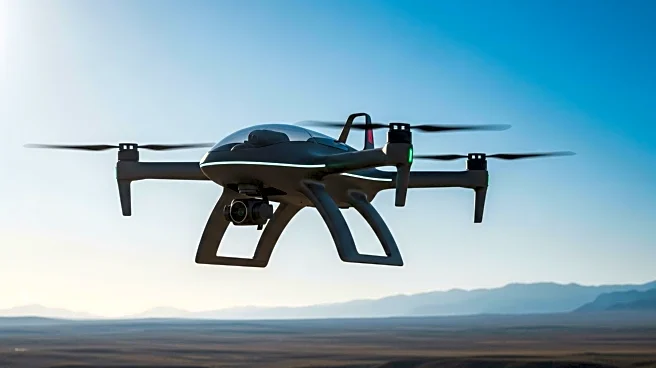What's Happening?
The Federal Aviation Administration (FAA) has released its proposed Part 108 rule, which aims to establish standards for beyond-visual-line-of-sight drone operations. This rule, detailed in a 589-page filing, outlines how ground-based operators can fly unmanned aircraft systems (UAS) beyond their visual range. Currently, the FAA restricts such flights but has granted exemptions to certain companies. The new rule applies to drones weighing up to 599kg and operating generally below 400ft. It also introduces Part 146, which governs drone-specific air traffic management services. The rule is designed to facilitate safe and scalable UAS operations for purposes such as package delivery, agriculture, and aerial surveying. Operators will need permits or certificates based on the scale and risk of their operations, and drones must meet airworthiness acceptance standards rather than full certifications.
Why It's Important?
The introduction of the Part 108 rule is a significant step towards integrating drones into the national airspace for commercial purposes. This could have substantial impacts on industries such as logistics, agriculture, and surveying, potentially revolutionizing how these sectors operate. Companies involved in drone technology stand to benefit from expanded operational capabilities, while the FAA's framework aims to ensure safety and efficiency. The rule could also stimulate economic growth by enabling new business models and services, such as drone delivery systems, which could enhance consumer convenience and reduce costs.
What's Next?
The FAA will likely engage with stakeholders to refine the proposed rules and address any concerns. Companies interested in drone operations will need to prepare for compliance with the new standards, including obtaining necessary permits or certificates. The rule's implementation could lead to increased investment in drone technology and infrastructure, as businesses seek to capitalize on new opportunities. Additionally, public and private sectors may collaborate to develop air traffic management solutions tailored to drone operations.












